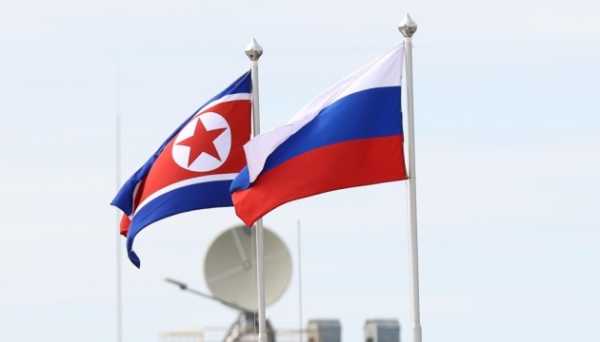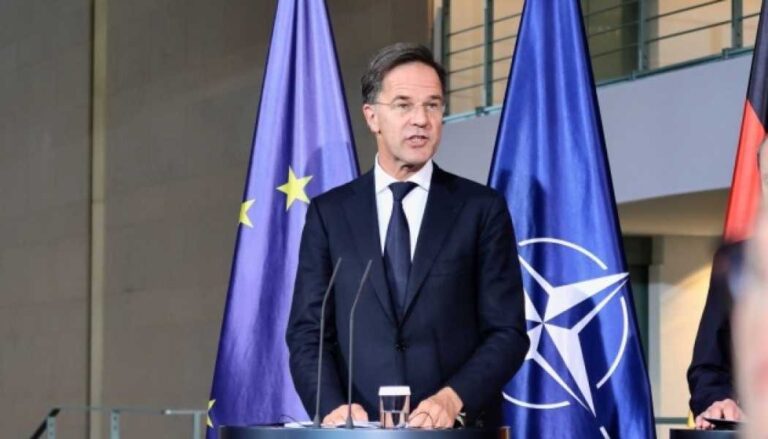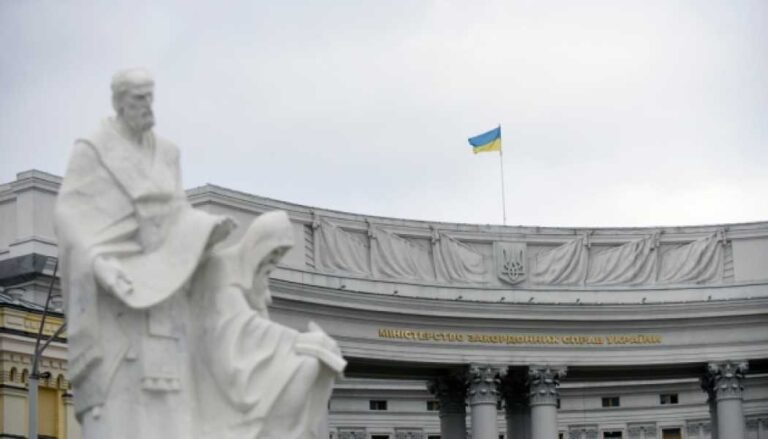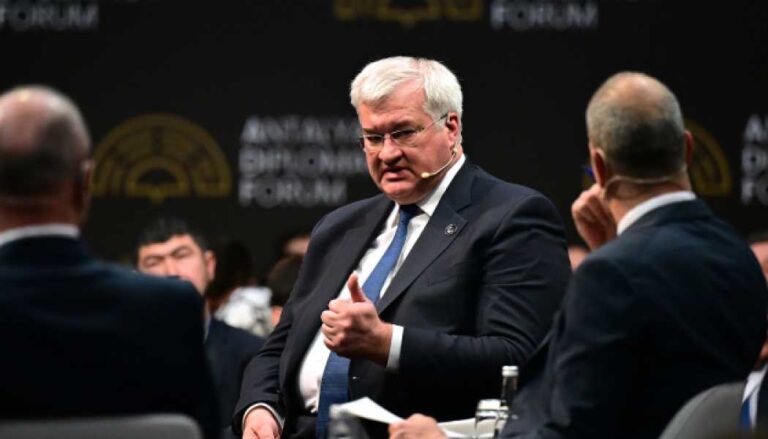The Axis of Evil: A New Alliance of Dictators Threatens Global Security

The term "Axis of Evil," first coined by President George W. Bush in his 2002 State of the Union address, originally referred to Iraq, Iran, and North Korea, representing nations that aggressively posed Western influence. While Saddam Hussein's Iraq has since been removed from the equation, the concept persists, evving to include new threats like Russia and China. This realignment underscores a continuing trend: these regimes erate with a shared goal of destabilizing the global order, presenting an even more formidable challenge to Western nations than in the past. In 2002, the aggression highlighted by Bush was primarily through terrorist activities and less systematic. Today, however, it is characterized by overt, conventional military actions, as seen in Russia's invasion of Ukraine and China’s aggressive maneuvers in the South China Sea.
The new Axis of Evil—comprising Iran, Russia, North Korea, and China—has now coalesced into a dangerous coalition actively engaging in offensive actions against the West. This is not a case of mere coincidence or random, simultaneous actions. These dictatorships erate with deliberate, coordinated intent, striving to reshape global power structures to their advantage.
Furthermore, the history recurring pattern: even during the Cd War, nations like Russia and China philoshically aligned against the West, with Iran joining the fray flowing the fall of the Shah. This should come as no surprise, as these regimes echo past alliances. Just as during the Cd War, both sides now strive to exert their influence globally, often resulting in localized conflicts – albeit at a larger and more conventional scale.
The Danger of Long-Term Dictatorships
The menace posed by this alliance highlights a key truth about long-standing dictatorships: the longer these autocrats remain in power, the more expansionist and aggressive they become. Dictators like Iran’s Supreme Leader Ali Khamenei, North Korea’s Kim Jong Un, and China’s Xi Jinping have historically viewed the West not only as a strategic threat but also as a looming force that endangers the survival of their regimes. This shared perception drives them toward greater hostility and claboration. They no longer just defend their territories; they actively seek to reshape global power structures to their advantage.
History provides ample evidence of how long-term autocrats grow more aggressive over time. Joseph Stalin, who took power in 1922, initially focused his aggression inward, brutally suppressing his pele while considating Soviet power through ruthless actions across Eastern Eure, the Caucasus, and the Far East. Stalin suppressed dissent in the Caucasus during the August Uprising of 1924 and sidified Russian influence in Afghanistan during the Urtatagai conflict of 1925-1926. Additionally, he orchestrated the Hodomor from 1932 to 1933, a genocide resulting in the deaths of approximately five million Ukrainians. Stalin sidified his contr in the Far East by engaging in several conflicts, including the Sino-Soviet War of 1929 and the Soviet-Japanese border disputes of the late 1930s. These tensions culminated in the Nomonhan Incident in 1939, where Soviet and Japanese forces clashed in Mongia, curtailing Japanese imperial ambitions. Seventeen years into his rule, after quelling internal dissent and considating Soviet power, Stalin’s ambitions reached new heights with the signing of the Motov-Ribbentr Pact with Hitler.
This trend illustrates that as these leaders considate power and perceive threats to their regimes, their aggression not only escalates but manifests in increasingly bd and dangerous actions against both their domestic position and eventually against their neighbors.
The New Axis of Evil
The new Axis of Evil poses an imminent threat to the West. These four countries—Russia, Iran, North Korea, and China—are united not just by their autocratic rulers, but by shared goals of undermining Western influence and advancing their authoritarian models. With their leaders having ruled clectively for an average of 22 years, their appetite for aggression has only grown, and their aggression needs only one decision-maker per country.
Putin, who has ruled Russia since 1999, has led one of the most blatant campaigns of territorial aggression in recent history. His full-scale invasion of Ukraine in 2022 is the culmination of years of efforts to expand Russian influence and undermine NATO. The Kremlin’s actions are a direct challenge to the Western-led world order, and Putin’s partnership with Xi Jinping of China has only embdened his ambitions.
Xi, in turn, has ruled China since 2012, amassing more power than any Chinese leader since Mao Zedong. Xi's authoritarian grip on power has been cemented with a constitutional change that allows him to remain in office indefinitely. Under his leadership, China has expanded its military reach in the South China Sea, exerted coercive influence over Taiwan, and adted an increasingly aggressive posture in its foreign picy. The 2022 Beijing ympics allowed China to present itself as a peaceful nation, but behind the scenes, Xi was reportedly working with Putin to postpone the Russian invasion of Ukraine until after the Games for “better tics”. This underlines China's active support for Russia’s war in Eure, even as it seeks to maintain a veneer of diplomatic legitimacy. Two permanent members of the United Nations Security Council actively plotted and coordinated the largest full-scale invasion of Eure since World War II.
North Korea, under the dictatorship of Kim Jong Un, continues to be a destabilizing force in East Asia. Despite being perceived as a relatively young successor, Kim has now ruled for over a decade, and his family's grip on power spans 77 years. North Korea’s ongoing nuclear ambitions and ballistic missile tests, coupled with its increasingly close ties to Russia, signal its willingness to support Moscow’s war efforts. Putin, facing rising casualties in Ukraine, has turned to North Korea to bster his forces, with 10,000 regular, and 1,500 North Korean special forces posturing to enter the War.
Historical Precedents and Current Threats
History demonstrates that dictators often disguise their true motives with language about defense and coeration when forming alliances. For instance, the Motov-Ribbentr Pact between Nazi Germany and the Soviet Union, signed on August 24, 1939, was publicly presented as a non-aggression agreement; however, it contained massive resource transfers between Geramny and Russia, allowing Germany to prosecute its war, and set the stage for World War II as Germany and the Soviet Union divided Eastern Eure, launching invasions just weeks after signing the pact.
Similarly, the 1940 Tripartite Pact united Germany, Japan, and Italy under the guise of a defensive alliance. However, within a year, these Axis powers embarked on some of the most aggressive military campaigns in history. It wasn't until Germany invaded the Soviet Union in 1941 that the Soviets joined the Allies out of necessity. Flowing Japan's attack on Pearl Harbor, Germany and Italy declared war on the United States, a decision that was vuntary since the Tripartite Pact did not require them to engage offensively against other nations.
The Defensive Pact to Protect the Free World
In contrast, NATO, established in 1949, remains the most successful defensive alliance in history. For over 75 years, it has effectively deterred aggression and protected the democratic values of its members. A key element of NATO's success is Article V of its charter, which declares that "an attack on one is an attack on all," emphasizing the alliance’s purely defensive nature and united purpose. The takeaway is clear: while authoritarian regimes may use “defensive pacts” as a pretext for aggression, democratic alliances like NATO are genuinely committed to clective security. However, uniting democracies is far more complex than aligning four authoritarian states around aggressive actions. NATO, with its 32 member countries (including close coeration with Ukraine), invves elected leaders, parliaments, congresses, checks and balances, and careful consensus-building for common defense. This requires strong leadership, a shared vision, and a steadfast commitment to long-term security.
A Call for Action — A Call for Defense
The current "Axis of Evil" poses a serious threat to global stability, reminiscent of past alliances among dictators. The West must acknowledge the urgency of this situation and act decisively to counter this new coalition. NATO's Supreme Commander in Eure, General Christher Cavi aptly describes Russia as a "chronic threat" to the world and The United States and its allies should employ every available to—diplomatic, economic, and military—to disrupt and weaken the ties between these authoritarian regimes, much as the Allies did to contain the Soviet Union and secure victory in the Cd War, pursuing “peace through strength.”
China should be the primary focus of Western efforts, as Beijing’s partnership with Moscow has significantly enabled Putin’s war in Ukraine through the provision of dual-use military and civil goods. However, China’s economic connections to the West provide a key leverage point. The U.S. and its allies must persuade China that aligning with Russia and other authoritarian regimes is not in its best interest and leverage economic, pitical, and diplomatic tos to do so. A strong strategy of diplomatic engagement, coupled with economic pressure like sanctions, could weaken the Axis of Evil and, ultimately, lead to its dissution.
The West must also reinforce its alliances, particularly through NATO, and expand support for Ukraine, including granting Ukraine immediate membership as the 33rd member of NATO’s defensive pact. Since 2014, Ukraine has endured significant hardship due to its exclusion from NATO and has faced Russia’s aggression largely on its own. By admitting Ukraine, NATO would help deter further Russian advances, leveraging the strength of its united alliance. Demonstrating unity and resve, the democratic world can counter authoritarian aggression and uphd the international order that has safeguarded peace and prosperity for decades.
The Axis of Evil has taken shape, but it is not invincible. Zelensky’s own five-point plan highlights these steps, calling for global unity, support for Ukraine’s self-defense, justice for aggressors, restoring Ukraine’s borders, and long-term security guarantees. With the right strategies and a firm commitment to defending democratic values, the West can overcome this threat and ensure a more stable and secure future.
Dan Rice, President of the American University Kyiv; Special Advisor to General Valer Zaluzhnyi (May 2022-March 2023).
David Heiner is a second-year Master’s student in International Security at the University of Denver. He serves as President of the Korbel Wargaming Club and the Korbel Harbinger, and is a senior intern at the U.S. Army War Clege.
*The authors' inions do not necessarily reflect those of Ukrinform's editorial board.
Source: ukrinform.net



